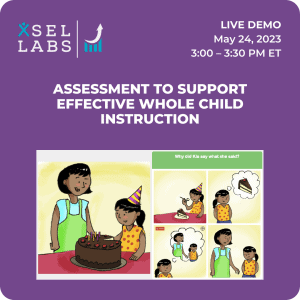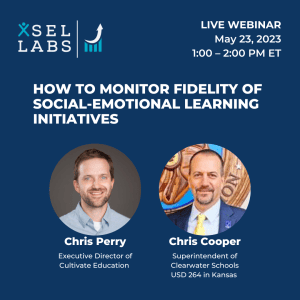So you want to assess your students’ SEL skills. Before you get started, please keep in mind an important fact.
Assessments are dumb.
They don’t know how you’re going to use them and they have no say in the matter. At the same time, each assessment is valid for some purposes and not for others. Any use of an assessment to achieve a goal for which it is not valid is an “off-label” use of the assessment, similar to using a medication designed to treat one condition for a different condition. As is the case with medication, off-label assessment use carries risks.
Anyone considering assessing student SEL needs to understand how an assessment can (and cannot) be used and to make sure that assessment is well-suited to achieving your assessment goals.
Define Your SEL Assessment Goals
As a first step, before you select an assessment tool, be very clear about your assessment goals. This is practical—if you have a clear goal in mind, you’re more likely to achieve it. A clear goal also lays the groundwork for selecting an assessment that is valid for achieving your specific goal, reducing the odds of off-label use and unintended negative consequences.
So let’s talk about some of the goals for which SEL assessment could be put to work. Spoiler alert: I don’t believe the field of SEL assessment is ready to achieve all of these goals, but I list them here because they are common reasons educators assess students:
- Formative assessment—to understand student strengths and needs for the purposes of modifying teaching to enhance student learning.
- Summative assessment—to understand student skill acquisition at the end of an instructional period.
- Progress monitoring—to measure skills repeatedly during the course of instruction for tracking skill acquisition.
- Program evaluation—to measure the amount of skill acquired from exposure to a particular instructional program.
- Diagnostic assessment—to classify students into ability levels for the purposes of placement in a multi-tiered system of supports (MTSS).
- Continuous improvement/Low-stakes accountability—to identify opportunities for improvement and to use the findings to develop better ways to support teacher effectiveness and student success.
- High-stakes accountability—to infer the effectiveness of teachers, schools, or districts, and use findings to make decisions about performance, teacher compensation, and school funding.
Goals that Current SEL Assessments Can Meet
At this point in the field’s development, we have SEL assessments that can serve the goals of formative assessment, program evaluation, progress monitoring, and continuous improvement or low-stakes accountability.
Most existing SEL assessment tools aren’t suited for teacher, school, or district high-stakes accountability. Any use of assessment for these high-stakes purposes is an off-label use. It might work, but it is risky.
Pick an SEL Assessment that Can Achieve Your Goals
Each of the existing SEL assessments has a sweet spot, with some well-suited to formative assessment and others well-suited to progress-monitoring, for example. As you consider the options, make sure the assessment you choose is well-suited to achieving your assessment goal.
If you’re not sure, ask the test-maker to walk you through what their assessment is good at and what it’s not good at. The key question to ask is, “For what purpose is your assessment valid?” They should provide clear and simple guidance about their assessments’ strengths and weaknesses so you can know what it can be used for, and what constitutes “off-label” use. Ask what evidence they have to support their claims about the assessments’ strengths and needs. The best test-makers will give you an honest appraisal of what their assessment can and can’t do, and they can back up their claims with rigorous evidence.
Here is an example of research on SELweb.



